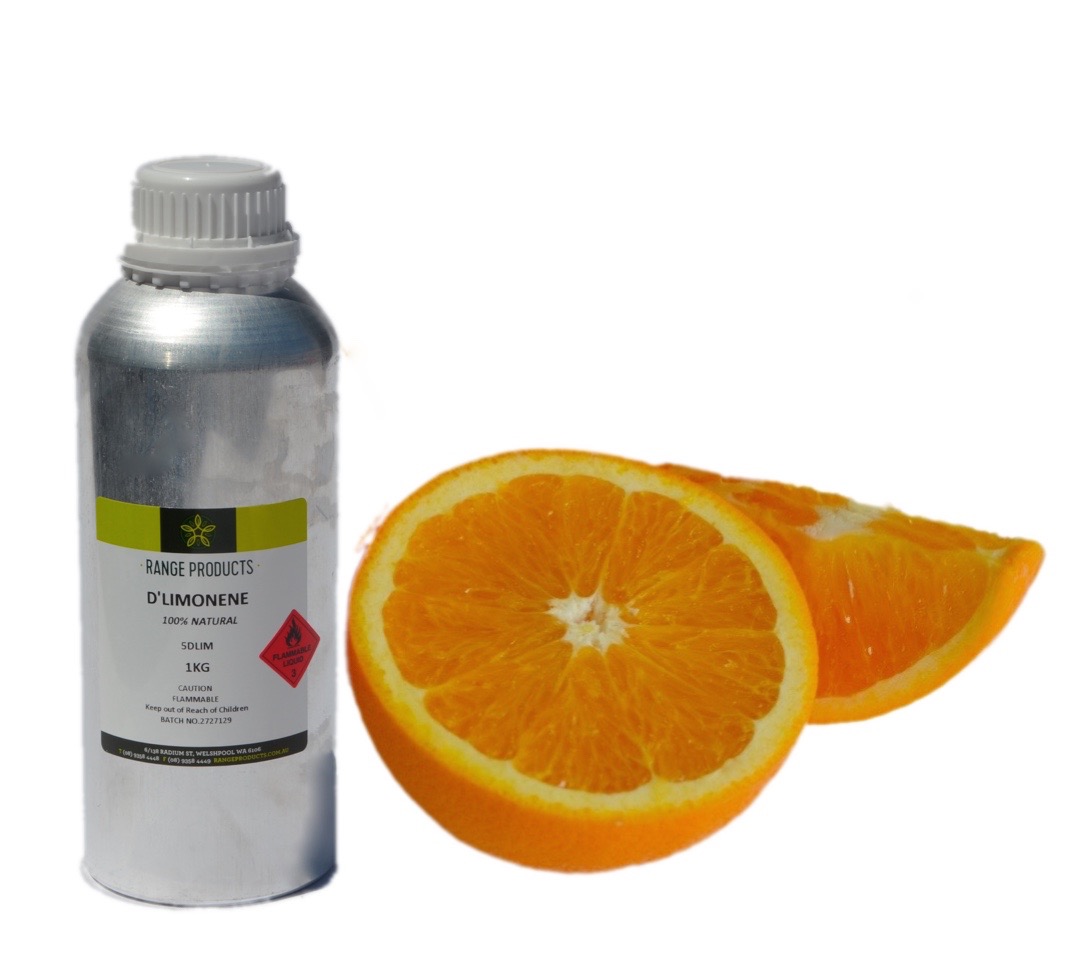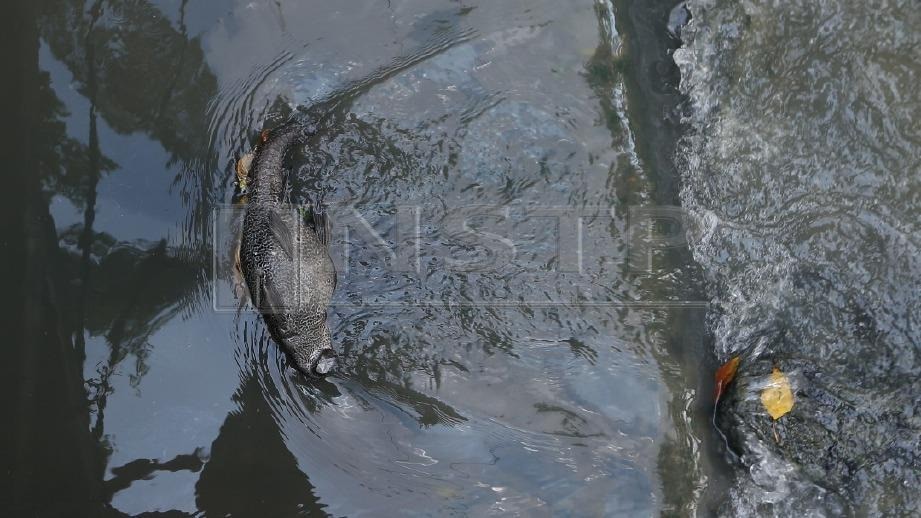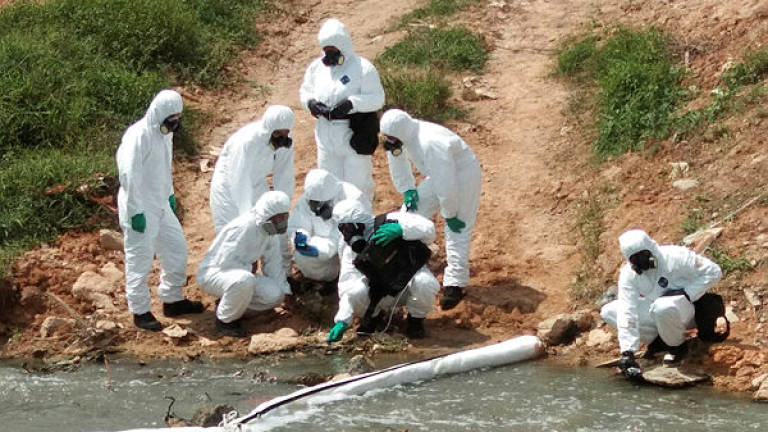What exactly were the chemicals found in the Johor river and how bad are they?

- 1.6KShares
- Facebook1.6K
- Twitter3
- LinkedIn8
- Email5
- WhatsApp45
[Artikel ini diterjemah daripada SOSCILI. Untuk baca artikel ni dalam BM, klik sini!]
Right now, the nation is shocked and angered at a man-made tragedy happening in Johor. In case you weren’t aware of what has been happening, more than a week ago (7th March) someone dumped a lot of chemical waste of a bridge into a river called Sungai Kim Kim in Johor. This apparently caused toxic fumes to be released along the river, and as of the time of writing, more than a thousand people living nearby had been affected, experiencing nausea, vomiting and fainting, with at least 13 people admitted to the Intensive Care Unit (ICU).

Agencies involved in the clean up of the river collected some 2.43 tonnes of chemical waste on the first day of clean up, but it was found that the waste is so toxic that the procedure needs to meet DOSH (Department of Safety and Health) standards, so clean up was postponed for almost a week before it was resumed by experienced contractors. The Department of Environment (DoE) had to approve a budget of RM6.4 million to clean up the affected 1.5 km of the river, and even the Malaysian Army’s Chemical, Biological, Radiological and Nuclear (CBRN) team had to be deployed to help the Bomba’s Hazmat Unit in the operation.
Oy, what a mess. While the type of toxic gas that’s causing all these has yet to be identified, the authorities sampled some water from the river (which is said to be so thick with sludge that fishermen in the area can’t start their boats) and managed to identify some nasty chemicals floating around. Stuff like…
1. A chemical that’s derived from… lemons?

D-Limonene (C10H16) is a colorless liquid that smells like oranges, and as its name suggests, it can be extracted from the peels of citrus fruits like lemons. It’s commonly used as a food supplement, flavoring, and as a fragrance in cosmetics, plus as a base chemical for other chemicals. Its less tasty uses include as a paint solvent, degreasing metals before painting, and according to Environment Minister Yeo Bee Yin, in the process of breaking down tyres for recycling.
“D-Lemonene (sic) is a chemical form that is usually found in tyre pyrolysis process,” – Yeo Bee Yin, as reported by the Edge Markets.
Other than possibly causing itchiness when touching your skin or when you swallow it, d-limonene isn’t very dangerous to humans. Of interest, however, since it’s involved in the tyre recycling process, it may have led to an illegal factory owner being charged in relation to the incident.
2. Tons of petroleum and oil based waste from boats

One day after the dumping, Johor’s DoE had identified the illegally dumped substance to be marine oil waste, which was used to lubricate the engines of boats. You know, like minyak hitam, except for boats. Datuk Mohammad Ezani Mat Salleh, the director of Johor’s DoE, estimated the amount dumped into the river to be around 20 to 40 tonnes. This oil is said to emit methane and benzene fumes, which are not only flammable, but can be pretty nasty to people as well.
Methane (CH4) is an odorless, colorless gas at room temperature, and it’s widely used as a fuel and blamed for global warming. It’s a component of natural gas, but a lot of things produce methane, like stuff decaying without oxygen (anaerobic decomposition) and producing and burning anything with carbon, like fossil fuels, charcoal and trash. Farts also typically contain about 7% methane, which is why some people can light their own farts.

Anyways, methane is non-toxic and not irritating to the eyes, but in confined areas they can displace the oxygen, causing people to suffocate. This causes symptoms like nausea, vomiting, convulsions, coma and death. Normally, methane is lighter than air, and in hot, humid weather, it’s likely to accumulate near the higher parts of enclosed buildings. Prolonged exposure can also slowly displace the oxygen in a person’s blood, leading to a slow suffocation.
Benzene (C6H6), on the other hand, is a colorless liquid that readily evaporates when exposed to air. That characteristic smell you smell when filling petrol is probably benzene. It’s a component of crude oil, and it’s a base chemical for many products, like rubbers, drugs, plastics and a whole mess of other things. While exposure to high concentrations of benzene can cause vomiting, dizziness, sleepiness, convulsions, rapid heartbeat, death and other things, benzene is mostly known for its long-term effect as a carcinogen, a chemical that causes cancer.

Benzene is usually produced along with two other chemicals, which have also been found in the river: xylene [(CH3)2C6H4] and toluene (C7H8), both colorless liquids that smell a bit like one of their common uses, paint thinner. Toluene is sometimes used for recreation (glue sniffing) and may cause light-headedness, headaches, sleepiness or a foggy brain, depending on how much exposure happened. Xylene, in addition to the usual nausea and vomiting-related symptoms, also cause eye irritation, impaired short-term memory, balance, and concentration, tremors and lack of muscle coordination, to name a few.
3. Possibly two types of strong acid

Hydrogen chloride (HCl) is a yellowish gas with a spicy smell, but since it’s found in the river’s water, it’s probably hydrochloric acid (HCl), which is what happens when it dissolves in water. It is usually used to clean and plate metals, in the refining of mineral ores, and other applications like making polymers for plastics, rubbers, fertilizers and dyes.
So you probably remember from school that HCl it’s a pretty strong acid with a pH of 3, so exposure to the gas can cause terrible chemical burns once it comes into contact with sweat on a person’s skin or other wet parts of the human body, like the eyes and mouth. Other symptoms include bluish lips and nails, chest pain, coughing, sometimes with blood, dizziness, and suffocation, to name a few.
As for hydrogen cyanide (HCN), well, the presence of it isn’t confirmed, actually. It would seem that it was from a now-deleted statement by the Johor Crown Prince saying that cyanide was found in the victims instead of from the DoE’s water sampling, but the authorities have said that they would wait for toxicological reports from the victims first. Anyways, hydrogen cyanide is a colorless to pale blue liquid that can be volatile and explosive. The vapors can cause death in a few minutes after inhalation.
“Hydrogen cyanide is a material often used in steel industries, and it’s also a controlled chemical used to make bombs, as it’s poisonous and is absorbed quickly.” – Dr Mohd Rizal Razali, of USM, translated from Sinar.
4. Chemicals that smell like burnt fat and onions

Acrylonitrile (C3H3N) is a colorless liquid with a pungent smell like onions, mainly used in the manufacture of plastics, adhesives and synthetic rubber. It is also the basic building blocks of the polymer polyacrylonitrile, which is used to make acrylic fabric. While useful, exposure to acrylonitrile vapors can cause headaches, dizziness, shortness of breath, and a general feeling of weakness. It is also linked to an increased chance of lung and prostate cancer. Since acrylonitrile vaporizes easily, it can contaminate the air where it’s used. When dissolved in water, it takes between one or two weeks to break down, though this can change according to the environment.
Acrolein (C3H4O), on the other hand, is a yellowish liquid that readily ignites and burns in air. It is said to smell like burnt fat, which is one way to make it. It can be found in the air, water or soil near badly managed disposal sites. Acrolein is often used in the manufacture of other chemicals and can be found in animal feed. It’s also used as a pesticide, and some industrial plants add them to their water network and supply to control the growth of underwater vegetation and algae. It is also produced in the body when it burns fat for energy, and the body’s inability to get rid of it have been linked to the death of nerve cells, causing Parkinson’s disease. While studies about the effects on people are incomplete, animals that ingest acrolein will suffer from digestive problems, vomiting, stomach ulcers and hemorrhage.
While these chemicals seem too scary to have any business being in a river…
Many more waste chemicals in the river remain unidentified

If you notice, these chemicals are relatively simple ones. Judging by the sludge in the river and the dead monitor lizards and fishes floating in it, plus the thousand plus people getting sick simply by being near it, who knows how many more dangerous waste chemicals are in that river? In fact, when asked whether the worst is over last Thursday, Yeo Bee Yin had said that she was more worried about the unknown chemicals still in the river and floating in the air around it.
While the operator of an illegal tyre recycling factory had been charged following the incident, he or she may not be the only one to blame, judging by the variety of chemicals in the river. Pollution by the surrounding factories is not a recent thing, and according to DoE data, from 2013 up to last year, 15 factory operators have been charged with offences under Section 34 (b) of the Environmental Quality Act, which stipulates prohibitions against placing and depositing scheduled waste.
Following this recent incident, the government has begun conducting a thorough inspection of all chemical plants in and around Pasir Gudang, mobilizing some 40 officers in 13 teams to inspect all 254 factories in the district. The police had also set up blockades in the affected areas to prevent illegal movement of solid wastes. Surprisingly, Yeo Bee Yin had stated in an interview that the waste causing the toxic fumes was not from the surrounding factories or the industrial area itself.

Regardless of all that, the public have been advised to not enter the affected area or have recreational activities there for now, and if one of your family of affected, the Bomba suggests washing their clothes separately to prevent the chemical residue from transferring. The public have also been advised to see a doctor if you experience nausea, shortness of breath, or eye and chest irritation. And if you have information on suspected illegal dumping cases in the future, you can contact the DoE enforcement unit at 011-2754 4926 or their national hotline at 1-800-88-2727.
- 1.6KShares
- Facebook1.6K
- Twitter3
- LinkedIn8
- Email5
- WhatsApp45

